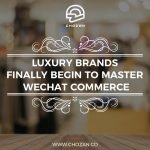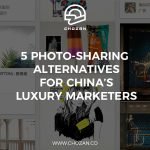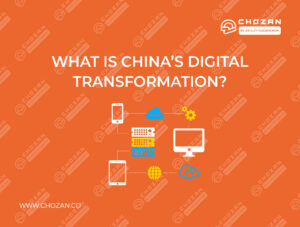Chinese consumers are global heavyweights in the luxury spending arena, with their share of purchases doubling last year. According to Bain, they will become the biggest spenders on luxury by 2025. However, the comparatively high costs of luxury goods in China has been a long-standing problem for domestic buyers.
How China’s domestic luxury shopping environment developed
Price hikes and different pricing strategies in various markets mean that as of 2021, luxury items in China are marked up as much as 60-75% compared to their prices in their home markets. This is why so many Chinese people travelled abroad for their luxury shopping pre-pandemic.
Beginning in 2017, the Chinese government began introducing policies, including large-scale cuts to import tariffs, to create more appealing prices for luxury goods and other items within China. This is transforming Hainan as a tourist destination and the landscape of luxury shopping in China.
Why is Hainan a hub for Chinese luxury spenders?
While Chinese consumers have long been valued by luxury brands for their significant consumption of luxury products abroad, China also has its own luxury heartlands. Sanya, a top tourist spot on Hainan island, ranks alongside first tier cities and has become the fifth most popular city in Mainland China when it comes to purchasing luxury goods.

The government has designed policies aimed at making Hainan a hub for Chinese spenders. In June 2020, the duty-free allowances for shoppers visiting Hainan were raised from 30,000 RMB (US$4,215) to 100,000 RMB (US$14,050). Visitors to the island who haven’t used their quota can continue tax-free shopping for 180 days after departure at duty-free offline stores, through WeChat mini programs and through e-commerce platforms. Duty-free product categories were increased from 38 to 45 to include watches, mobile phones, computers and fashion items. There was also an increase in the number of shops with duty-free licences. By 2025, Hainan Island will be a duty-free zone so duty-free licenses will no longer be required.
Hainan also has the added advantages of being an island tourist destination with plenty of beaches and pleasant weather year round. As it becomes increasingly attractive as a shopping destination, luxury brands must develop a strategy to target the influx of Chinese shoppers expected in the next few years.
Photo by Denny Ryanto on Unsplash
Covid-19 recovery and effects on Chinese consumers
The Chinese economy and Chinese consumer confidence has recovered substantially since the outbreak of the pandemic. A survey carried out by Ruder Finn and Consumer Search Group in January, 2021 showed that 41% of Mainland Chinese respondents planned to increase their spending in 2021. This was up from 36% in March 2020 and almost equal to the survey’s 44% forecast from 2020. While international travel witnessed a steep decline due to travel restrictions, Hainan was able to help absorb Chinese consumers’ spending capacity. From July to October, 2020, duty-free sales in Hainan reached over 12 billion yuan. An increase of 214.1% from the previous year.
Forecasts show that Hainan will not only maintain its allure as a luxury shopping destination, but its opportunities for growth will increase even after international travel opens up. According to a McKinsey survey, 62% of visitors said they would return to Hainan for duty-free shopping and 40% of that group said they would spend more on their next visit, meaning there is a great opportunity for brands considering breaking into Hainan.
Almost 4.6 million people visited Hainan during Spring Festival 2021, leading to revenue of over 5.8 billion yuan. With Hainan’s charm and the backing of government policy, it’s poised to become one of the most lucrative travel retail destinations in Asia.
How can brands make the most of Hainan?
1. Launch a landmark Hainan event
According to the managing director of Swarovski China, Judith Sun, the brand’s Sanya Haitang Bay store is one of its best performers globally. May, 2021, saw the launch of the inaugural Hainan China International Consumer Products Expo. Swarovski used the opportunity to transform its booth into one of its new Instant Wonder immersive stores, similar to those in New York, Paris and Milan. The brand has plans to open new concept stores in several cities in China.
Choosing Hainan as the location for its China reveal showed not only how much it values its Chinese luxury audience but also how much it values Hainan as an exclusive shopping destination. Consumers are more willing to travel and pay luxury prices when they know they’re valued as customers.
2. Treat Hainan consumers as sophisticated luxury shoppers
As luxury consumption in China has evolved, consumers are no longer looking to explicitly display wealth and status through their purchases. Chinese consumers have begun to value premium products in new ways and appreciate other attributes, like sustainability, rather than valuing brands and logos alone as symbols of success. As the Chinese luxury consumer has become more sophisticated, their priorities and values have changed. It’s important that brands in Hainan respect and value these new attitudes, rather than simply hoping that consumers will be enticed by lower prices.
Kiehl’s created a pop-up store and had an official ceremony to showcase sustainability as a key part of their brand philosophy. The Ruder Finn and Consumer Search Group report found that 84% of Mainland Chinese luxury consumers see sustainability as important and that most consumers are willing to pay more for sustainable products. The “Kiehl’s Loves Hainan” pop-up allowed consumers to discover more about the brand’s sustainability work and promised to plant a tree for each product purchased at the pop-up. The pop-up revealed different facets of the brand and showed consumers’ values being appreciated, not just their consumption power.
3. Embrace digital
55% of Mainland Chinese consumers have shopped online more for their luxury goods since the start of the pandemic. The new regulations mean that it’s possible to purchase duty-free goods online up to 180 days after leaving Hainan and have them delivered to your home. This means that accessible, convenient online options play a key role in any luxury brand’s Hainan strategy and that brands must build a relationship with consumers both before they arrive on the island and after they leave.
L’Oréal uses a special duty-free website to advertise its goods. They can be bought at duty-free prices and picked up at allocated destinations, which in Hainan includes both the airport and the Sanya International Duty Free Shopping Complex. Consumers are also able to use the website to browse L’Oréal’s exclusive duty-free deals. The brand collaborated with the CDF Haikou Meilan Airport Duty Free Store for a Weibo giveaway. Those who shared the post got a chance to win a L’Oréal foundation. Embracing digital has worked well for L’Oréal, with e-commerce sales up 62% YoY for them across all divisions and regions.
Photo by Pavel Roev on Unsplash
Hainan will have a strong role in the luxury market
The Chinese luxury market holds considerable consumption power that is forecasted to grow over the next few years and Hainan has a strong role to play.
However, shopping for luxury products demands an experience and high-quality service that is not fully developed in Hainan. Industry experts, such as LVMH’s Asia President, Andrew Wu, stated that the environment offered by Hainan is ‘backward’ and in need of a rapid upgrade. A review of shopping malls in Hainan showed design flaws like a lack of access from the main road or a maze to try and find the most popular products as well as lengthy queues to even get into stores. Many brand managers are hoping that an improved luxury environment and new premium shopping malls will be developed as 2025 approaches and the whole island becomes a duty-free location.
In 2019, 40% of duty-free products worldwide were sold to Chinese consumers overseas. This amounts to more than 180 billion yuan (US$28 billion). If Hainan can become an international level duty-free luxury retail haven, it could unlock great potential.
If your brand needs help and guidance we can help with training tailored to your specific needs or answer your most urgent questions in an expert call or a series of consultation sessions. Contact us and we’ll arrange a video chat to find out what you need and move forward from there.
Read more related posts
-
Luxury Brands Finally Begin to Master WeChat Commerce
Although the global personal luxury market is stuck in a holding pattern for the foreseeable future, China is likely to continue to make up for weaker demand elsewhere. China’s Domestic…
-
Luxury Brands Finally Begin to Master WeChat Commerce
Although the global personal luxury market is stuck in a holding pattern for the foreseeable future, China is likely to continue to make up for weaker demand elsewhere. China’s Domestic…
-
Luxury Brands Finally Begin to Master WeChat Commerce
Although the global personal luxury market is stuck in a holding pattern for the foreseeable future, China is likely to continue to make up for weaker demand elsewhere. China’s Domestic…
-
No Pinterest? No Problem: 5 Photo-Sharing Alternatives for China’s Luxury Marketers
Most marketers will have heard that Pinterest has joined Facebook, Twitter, and Instagram on the list of sites blocked in China. While Pinterest has never been as popular in China…
-
From Mini Apps to KOLs: 6 Effective Luxury Marketing Campaigns on WeChat
Since our last WeChat campaign roundup, luxury brands have been maintaining a strong presence on China’s headliner social media platform. Big brands, including Longchamp, Chanel, and Montblanc, have been coming up…







